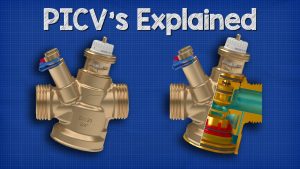Balancing valve is equivalent to a throttle element whose local resistance can be changed. For incompressible fluid, the flow equation can be obtained.
Compared with other valves, balancing valves have the following characteristics:
- (1) Linear flow characteristics, that is, under the condition of constant pressure difference between front and back of the valve, the flow and opening are generally linear;
- (2) There are precise indicators of openness;
- (3) With opening locking device, non-managers can not change the connection of the opening meter at will, and can conveniently display the pressure difference before and after the valve and the flow through the valve.
Although balancing valve has many advantages, there are still many problems in its application in air conditioning water system. If these problems are not solved properly, the characteristics of balancing valve can not be fully displayed. The function of the balance valve is to regulate the predetermined flow rate of each distribution point (such as each floor) in the system. The balance valve is installed at the entrance of each building, so that the total flow rate of the heating system can be reasonably distributed.
The principle of ZLF self-balancing valve is the reverse regulation in the valve body.
When the pressure at the inlet increases, the diameter of the valve is automatically reduced and the flow rate is reduced, and vice versa. If reversed, the regulation system will not work. Moreover, the valve disc which plays a regulating role is directional, and the reverse pressure can even reduce or even close the flow. Since the balance valve is installed for better heating, there is no problem of reverse installation. If it is a counterfeit, it is a man-made mistake, of course, it will be corrected. Balance valve belongs to the category of control valve. Its working principle is to adjust the flow rate by changing the clearance between the spool and seat (i.e. opening), and changing the flow resistance of fluid through the valve. Balance valve is equivalent to a throttle element whose local resistance can be changed. For incompressible fluid, the flow equation can be obtained.
Kv is the valve coefficient of the balancing valve.
It is defined as the flow value (m3/h) flowing through the balancing valve when the differential pressure between front and back of the balancing valve is 1 bar (about 1 kgf/cm2). The valve coefficient of the digital lock balance valve is equal to the flow capacity of the ordinary valve when it is fully open. If the opening of the balancing valve remains unchanged, the valve coefficient Kv remains unchanged, that is to say, the valve coefficient Kv depends on the opening. Valve coefficients at different openings can be obtained by actual measurement. Balance valves can be used as throttling elements for quantitative flow regulation.












